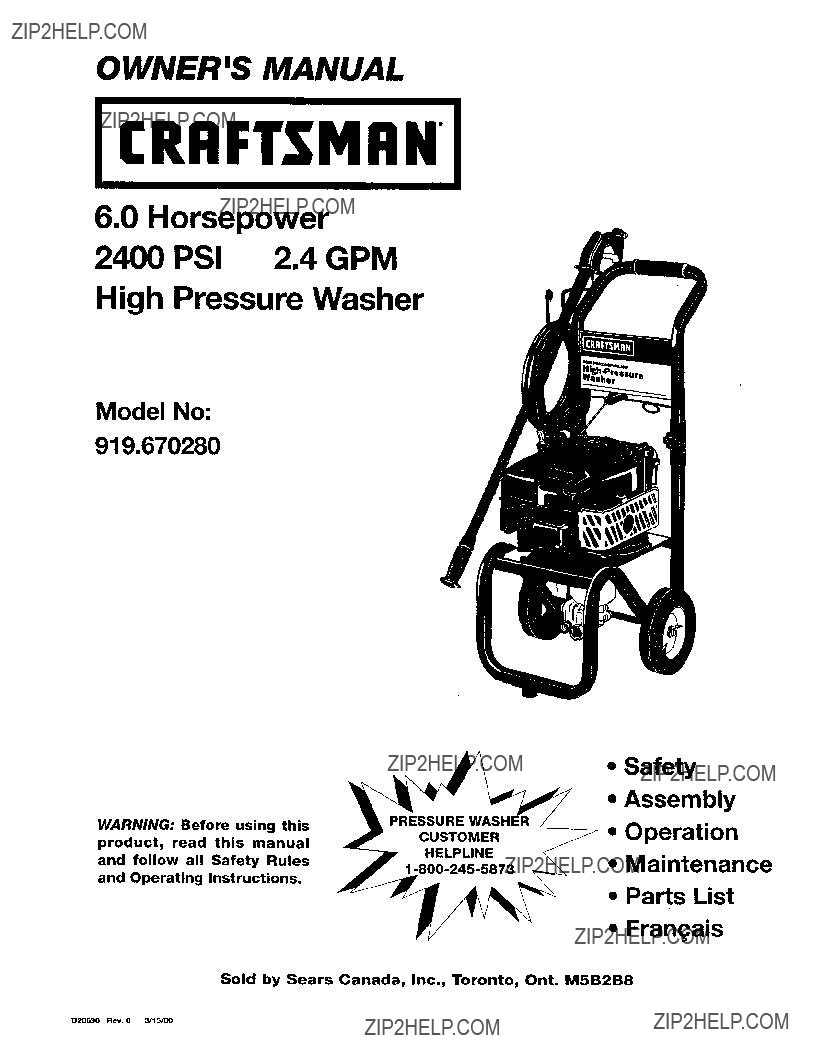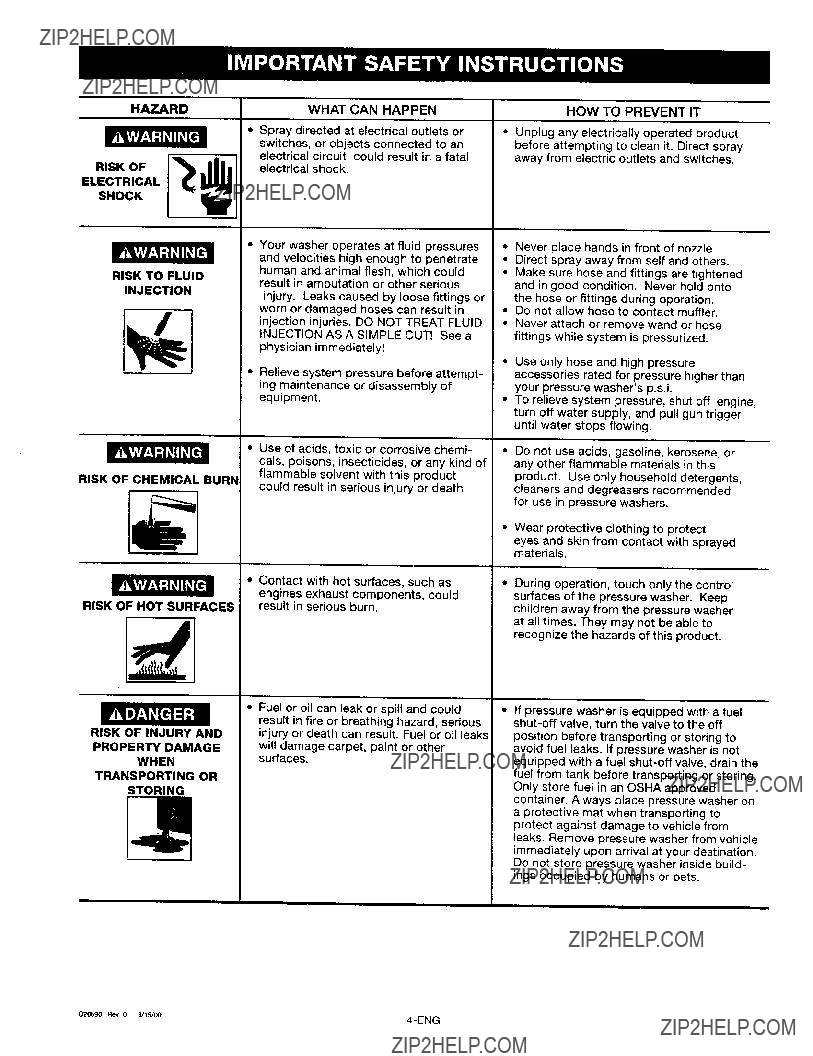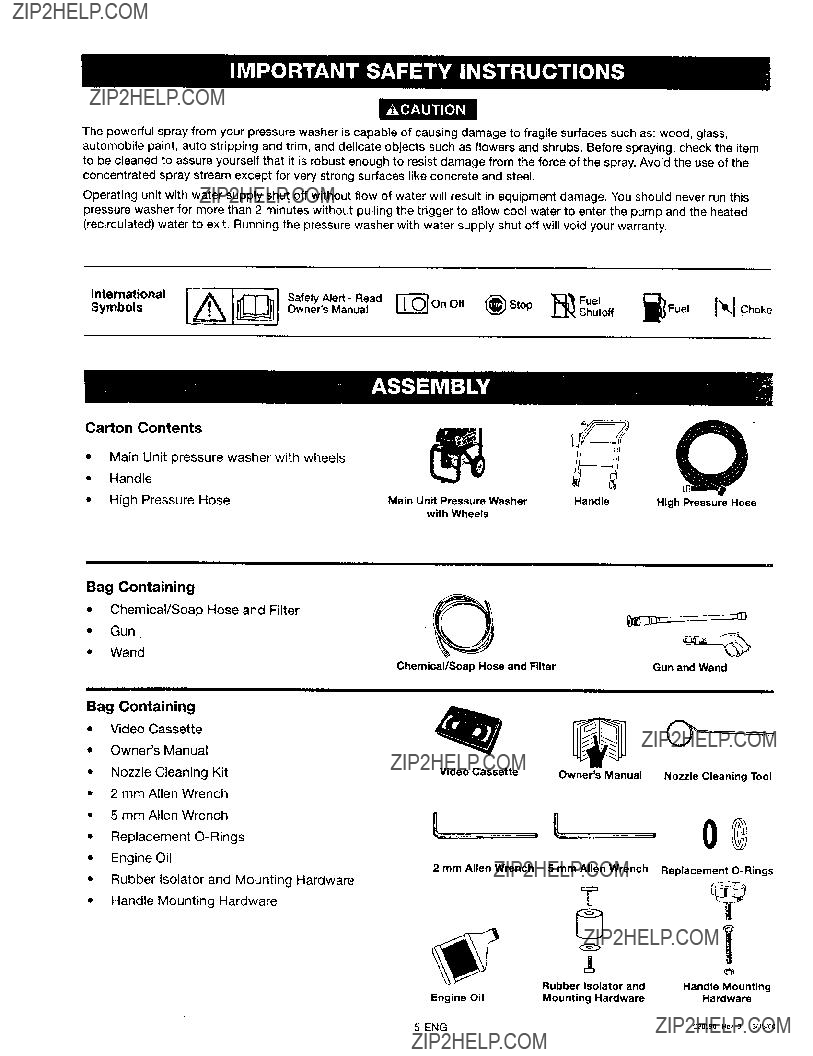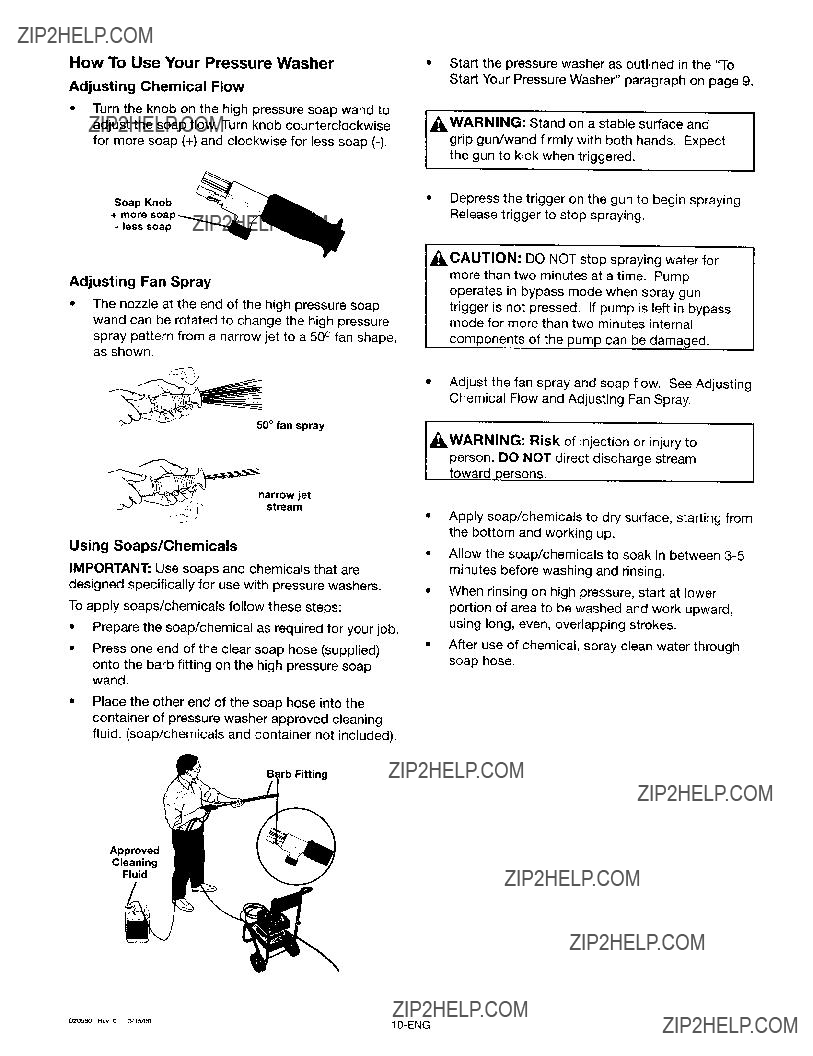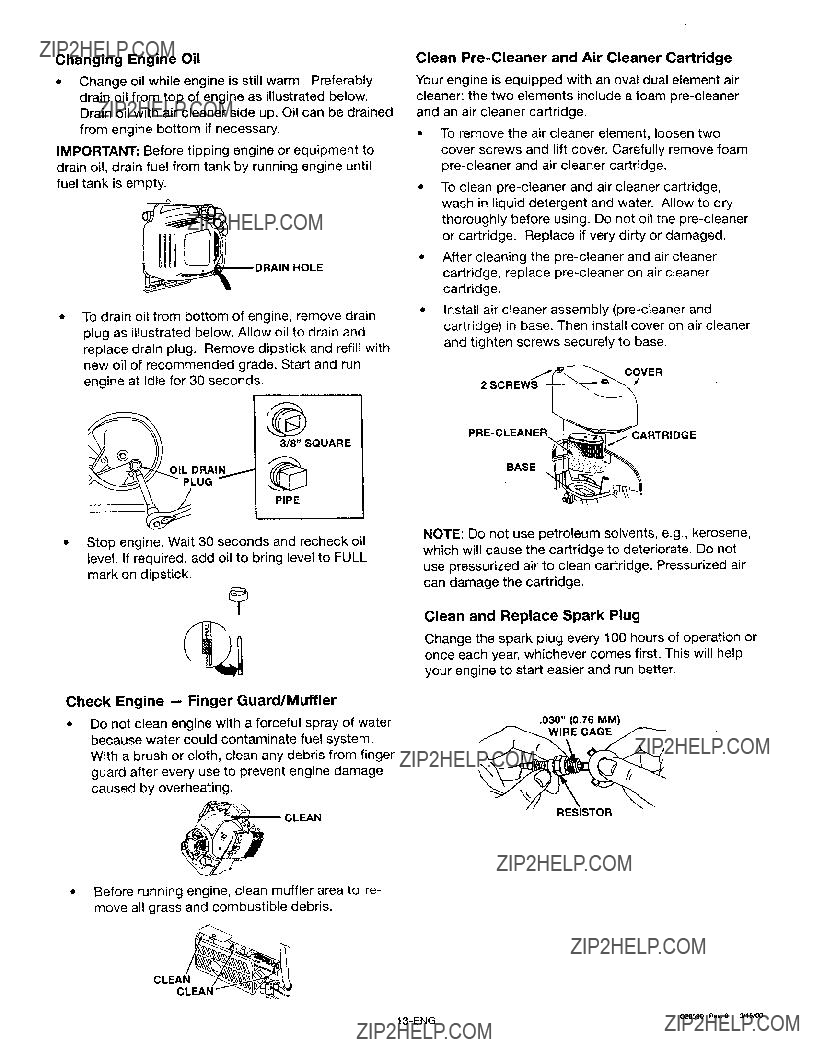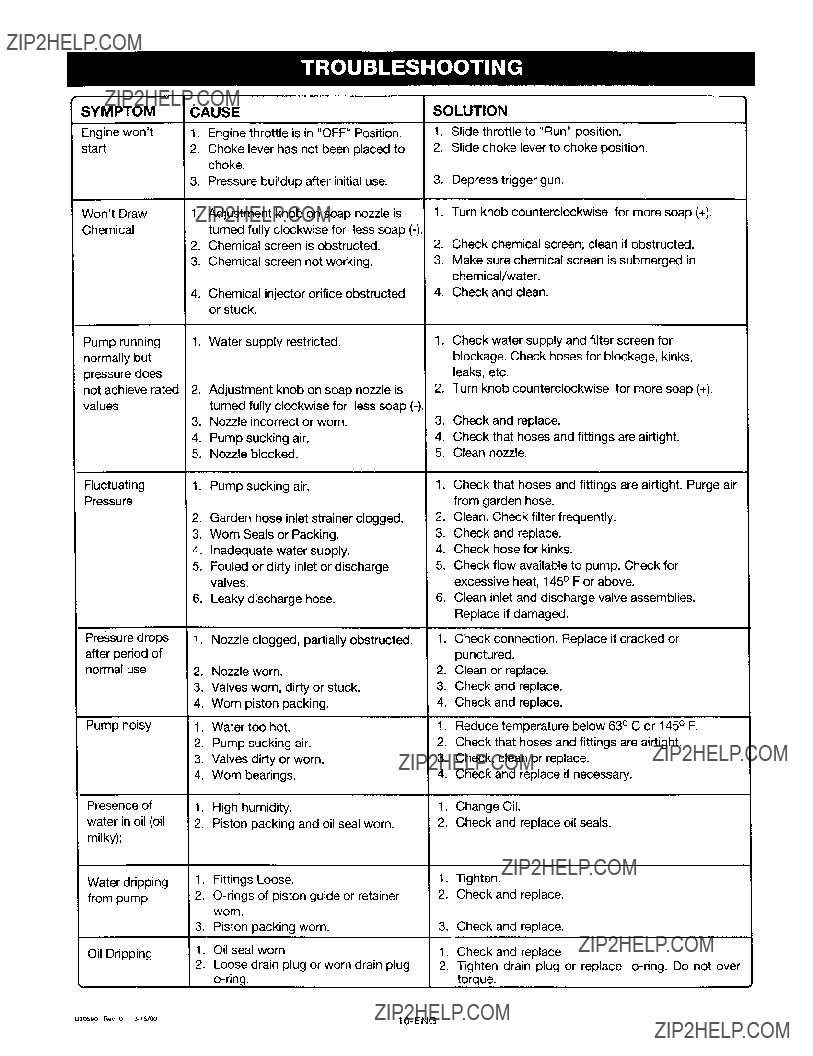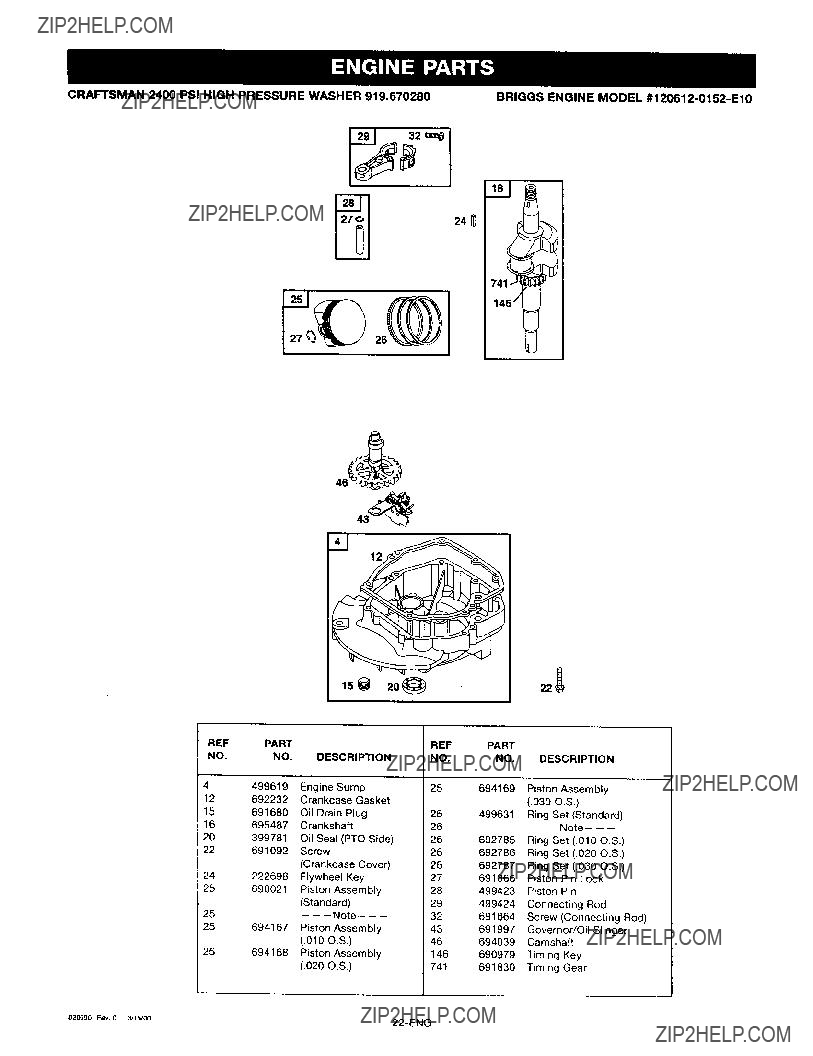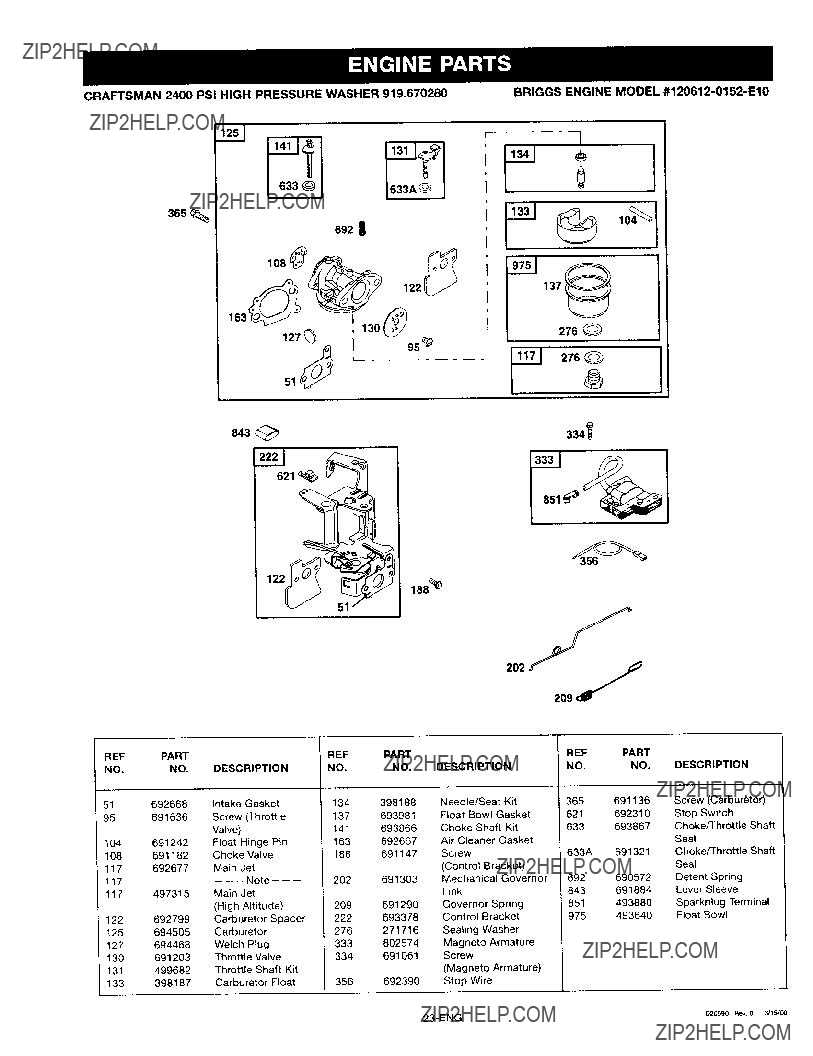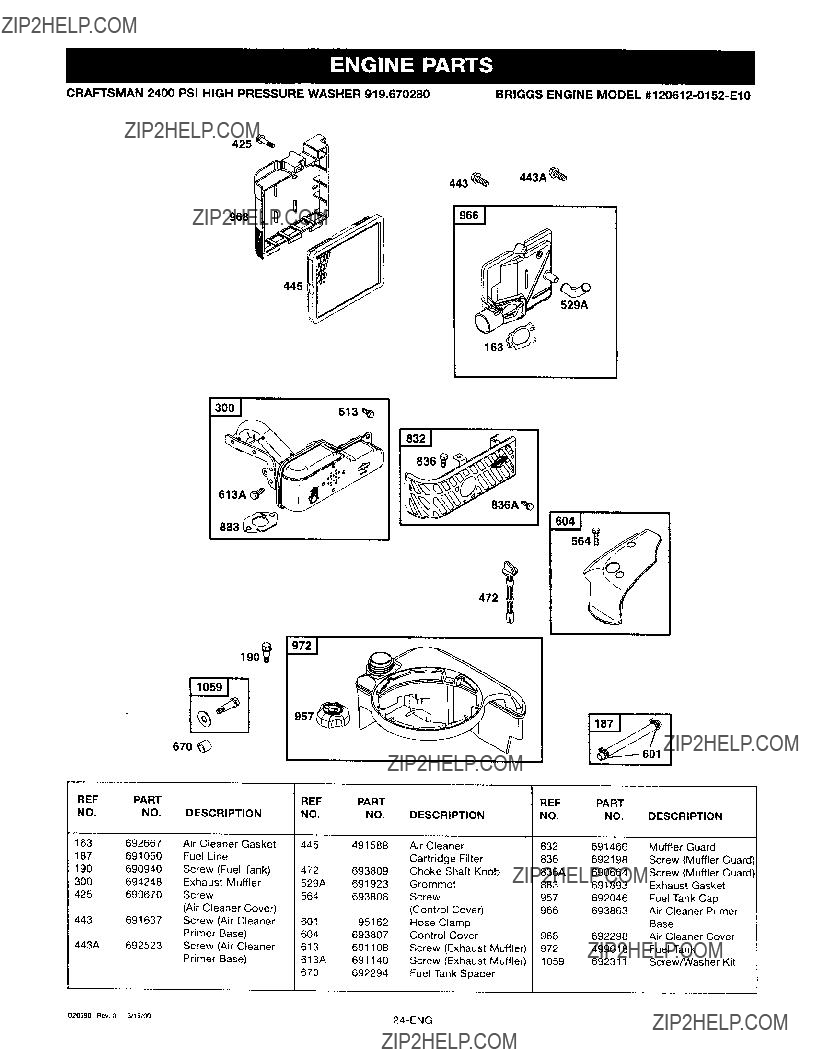WHAT CAN HAPPEN
???Spray directed at electrical outlets or switches, or objects connected to an electrical circuit, could result in a fatal electrical shock.
Your washer operates at fluid pressures and velocities high enough to penetrate human and animal flesh, which could result in amputation or other serious injury. Leaks caused by loose fittings or worn or damaged hoses can result in injection injuries. DO NOT TREAT FLUID INJECTION AS A SIMPLE CUT! See a physician immediately!
Relieve system pressure before attempt-
ing maintenance or disassembly of equipment.
Use of acids, toxic or corrosive chemi-
cals, poisons, insecticides, or any kind of flammable solvent with this product
could result in serious injury'or death.
???Contact with hot surfaces, such as
engines exhaust components, could result in serious burn.
???Fuel or oil can leak or spill and could
result in fire or breathing hazard, serious mlury or death can result. Fuel or oil leaks
will damage carpet, paint or other surfaces.
HOW TO PREVENT IT
???Unplug any electrically operated product before attempting to clean it. Direct spray away from electric outlets and switches.
???Never place hands in front of nozzle.
???Direct spray away from self and others.
???Make sure hose and fittings are tightened
and in good condition. Never hold onto the hose or fittings during operation.
???Do not allow hose to contact muffler.
???Never attach or remove wand or hose fittings while system is pressurized.
???Use only hose and high pressure accessories rated for pressure higher than your pressure washer's p.s.i.
???To relieve system pressure, shut off engine, turn off water supply, and pull gun trigger until water stops flowing.
???Do not use acids, gasoline, kerosene, or any other flammable materials in this
product. Use only household detergents, cleaners and degreasers recommended for use in pressure washers.
???Wear protective clothing to protect
eyes and skin from contact with sprayed materials.
???During operation, touch only the control surfaces of the pressure washer. Keep
children away from the pressure washer at all times. They may not be able to recognize the hazards of this product.
??? If pressure washer is equipped with a fuel shut-off valve, turn the valve to the off position before transporting or storing to avoid fuel leaks. If pressure washer is not equipped with a fuel shut-off valve, drain the fuel from tank before transporting or storing. Only store fuel in an OSHA approved container. Always place pressure washer on
a protective mat when transporting to protect against damage to vehicle from leaks. Remove pressure washer from vehicle immediately upon arrival at your destination. Do not store pressure washer inside build- ings occupied by humans or pets.
